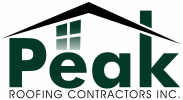Exterior siding plays a crucial role in a home’s overall appearance. Depending on your choice, your house can look modern or traditional, contemporary or rustic. More importantly, your siding choice determines the amount of money you will need to spend over the long term to make your home look good and the amount of time you will need to spend maintaining it.
If you’ve read parts one and two of this three-part blog, then you know by now why vinyl siding makes for an excellent choice. However, despite its being a widely popular option, vinyl siding still is just one of the many options available to homeowners like you. Let’s take a look at how it compares with other siding materials.
Brick
- According to the RSMeans 2014 Residential Cost Data, using brick as siding when building or renovating is five times more expensive than when you use vinyl.
- However, vinyl siding also manages to outperform brick on a considerable number of performance measures tested by the Building for Environmental and Economic Sustainability (BEES) software.
- Vinyl has more profiles and shapes; this alone makes vinyl suitable for any style of architecture. Brick, on the other hand, can only cater to specific styles and colors.
Wood
- Vinyl siding is flammable, but then again, so is wood.
- Vinyl is cheaper than wood siding but can mimic its look. Considerable improvements to vinyl over the years has made it even more durable and more visually appealing.
- Wood cannot compete with vinyl in terms of the variety of styles and colors available.
- Vinyl is easier to install.
- Wood has natural insulating properties, but there is now insulated vinyl to make up for that.
- There is no need to repaint vinyl, something that wood needs every now and then.
Fiber Cement
- Vinyl and fiber cement both cost about 25% less than wood, stone, or brick siding.
- Fiber cement is heavier and more difficult to install, while vinyl is incredibly stable despite being lightweight.
- Vinyl can be used in different climates, while fiber cement is susceptible to complications arising from freezing and thawing.
- Fiber cement is absorptive cladding like wood, so it can rot or grow molds over time.
These are only some of the siding materials out there—and it is apparent that each has its own advantages and disadvantages. However, vinyl has proven itself worthy of being a great siding option. Just make sure you do your research and choose the right brand—one that offers both quality and affordability. More importantly, do not hesitate to seek professional assistance on vinyl siding installation.
